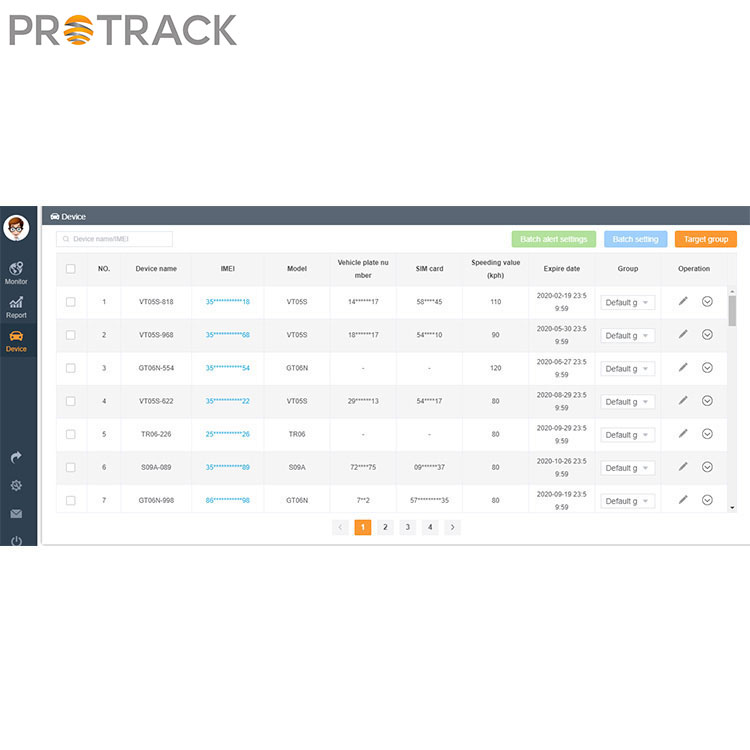Components and features of a GPS vehicle tracking system
2023-11-09
A GPS vehicle tracking system is a technology that uses Global Positioning System (GPS) technology and other communication technologies to monitor and track the real-time location, movement, and various parameters of vehicles. These systems provide precise and up-to-the-minute information about a vehicle's location and status. GPS vehicle tracking systems are widely used in various industries for a range of applications, including fleet management, logistics, security, and personal use. Here are the key components and features of a GPS vehicle tracking system:
Key Components:
1. GPS Tracking Device: Each vehicle is equipped with a GPS tracking device, also known as a GPS tracker. This device uses GPS satellites to determine the vehicle's exact location. Some trackers also incorporate additional sensors for collecting data such as speed, temperature, and fuel level.
2. Communication Module: The tracking device communicates with a central server through cellular networks (GSM/3G/4G) or satellite communication. It transmits real-time location and sensor data.
3. Central Server: The central server receives, processes, and stores the data sent by the tracking devices. It is equipped with tracking software and databases to manage and analyze the information.
4. User Interface: End users, such as fleet managers, business owners, or individuals, access the tracking system through a user-friendly web-based or mobile app interface. This interface provides real-time maps, reports, and alerts.
Key Features and Functions:
1. Real-Time Location Tracking: The system provides real-time location information for vehicles on a map, allowing users to monitor their positions continuously.
2. Route Planning and Optimization: Users can plan and optimize vehicle routes to save time, reduce fuel consumption, and enhance operational efficiency.
3. Speed and Behavior Monitoring: The system can monitor vehicle speed and driver behavior, generating alerts for excessive speeding or unsafe driving practices.
4. Geofencing: Users can define geofences, virtual boundaries on a map, and receive notifications when vehicles enter or exit these predefined areas.
5. Maintenance Alerts: The system can track vehicle maintenance schedules and generate alerts for routine maintenance tasks, reducing the risk of unexpected breakdowns.
6. Fuel Consumption Monitoring: Users can track fuel consumption and identify areas where fuel efficiency can be improved.
7. Integration with Other Systems: Many tracking systems can integrate with other software systems, such as inventory management, dispatch software, or customer relationship management systems, providing a comprehensive solution for businesses.
Applications:
1. Fleet Management: GPS vehicle tracking systems are widely used in fleet management to monitor and optimize vehicle movements, reduce operating costs, and enhance driver safety.
2. Logistics and Transportation: Logistics companies use the system to track shipments, optimize delivery routes, and ensure timely deliveries.
3. Public Transportation: Public transportation authorities use real-time tracking to provide accurate information to passengers about the location and arrival times of buses and trains.
4. Security and Stolen Vehicle Recovery: Vehicle tracking systems are used for security and recovery purposes, helping authorities locate stolen vehicles.
5. Construction and Heavy Equipment: The technology is used to monitor the location and usage of construction equipment and vehicles on job sites.
6. Delivery Services: Package delivery companies use real-time tracking to provide customers with the status and location of their deliveries.
7. Personal Vehicle Tracking: Some individuals use tracking systems for personal vehicles for security and monitoring purposes.
A GPS vehicle tracking system offers numerous benefits, including improved operational efficiency, cost savings, enhanced security, and better customer service. These systems have become indispensable tools for organizations and individuals seeking to manage and monitor their vehicles and assets effectively.



